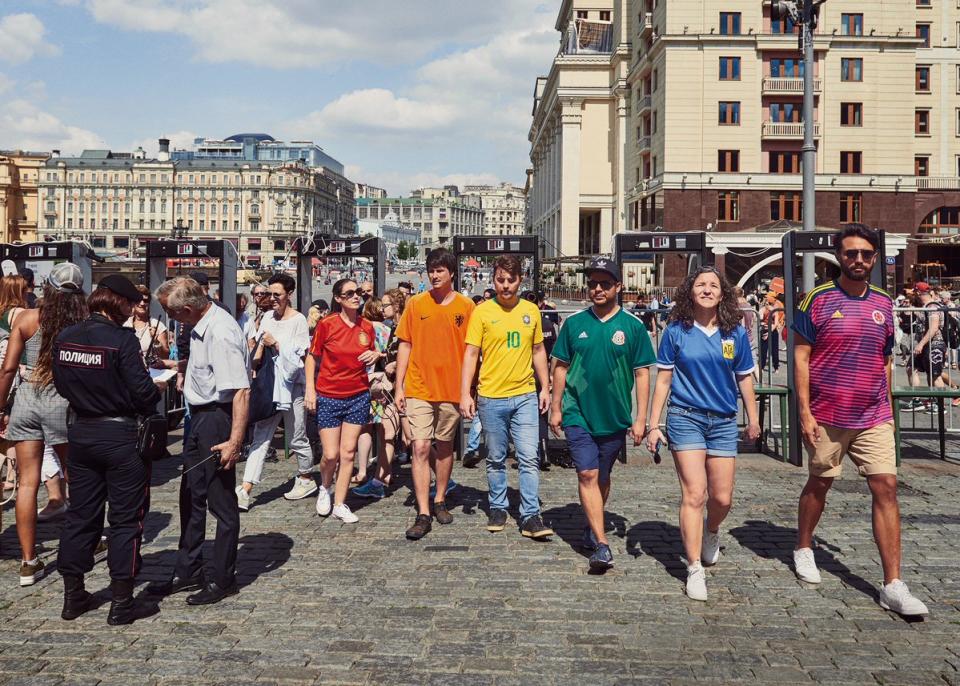Activists figured out a pretty sneaky way to protest Russia's anti-LGBTQ laws at the World Cup

If Russia won’t let you fly the rainbow flag, well, you can be the rainbow.
That’s what one group of six activists apparently figured out, as the group ventured around Russia wearing soccer jerseys from their own countries strategically arranged to form a rainbow.
in russia, the act of displaying the LGBT flag in public can get you arrested. so these 6 activists from latin america resorted to creativity: wearing uniforms from their countries' football teams, they turned themselves into the flag and walked around moscow with pride. 🏳️🌈 pic.twitter.com/7Q2HgLemzh
— gabi (@harleivy) July 8, 2018
In case you were wondering, the jerseys used are Spain (red), The Netherlands (orange), Brazil (yellow), Mexico (green), Argentina (blue) and Colombia (purple).
The initiative is called The Hidden Flag, which has a website explaining why the group is protesting Russia.
When Gilbert Baker designed the rainbow flag in 1978, he did so to create a symbol and an icon for the LGTB community. A symbol, recognisable across the world, that people could use to express their pride.
Unfortunately, 40 years later, there are still countries in which homosexuality is persecuted, sometimes even by jail sentences, and in which the rainbow flag is forbidden.
Russia is one of these countries.
In 2013, Russia enacted its infamous gay propaganda law, which sought to prevent the display of “non-traditional sexual relationships” to minors. Behind its ostensible “for the sake of the children” rationale, the law effectively outlawed all gay rights activism and resulted in anti-LGBTQ hate crimes doubling in Russia.
More from Yahoo Sports:
• Huge brawl erupts between players, officials at AUU basketball game
• Phil Mickelson calls himself on obscure rule violation at The Greenbrier
• Dwight Clark’s ashes buried next to famous goal post from ‘The Catch’
• Mexican club mocks Neymar in hilarious halftime contest


